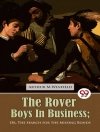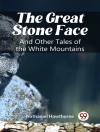D. H. Lawrence’s ‘John Thomas and Lady Jane’ is a provocative novella that intricately explores themes of sexuality, class, and desire within the context of early 20th-century England. The narrative unfolds through the lens of sensual and often explicit imagery, characteristic of Lawrence’s distinct literary style, which combines naturalism with vivid, emotional prose. This work can be seen as a precursor to the feminist and sexual liberation movements, as it defies the repressive norms of its era, challenging the constraints of love, marriage, and morality while encapsulating the complexities of human relationships in an industrial society. D. H. Lawrence, born in 1885 in a coal-mining town, was deeply influenced by his working-class background and the burgeoning modernist movement. His own tumultuous relationships and his quest for authenticity in emotional experience significantly shaped his writing. ‘John Thomas and Lady Jane’ emerges as a daring exploration of the struggle between primal instincts and societal expectations, reflecting Lawrence’s belief in the necessity of passion and connection as integral to human existence. This novella is highly recommended for readers seeking an unfiltered glimpse into the psyche of early 20th-century individuals navigating the tumult of societal change. Lawrence’s candid examination of love and desire invites readers to reflect on their own perceptions of intimacy, making it a significant contribution to the discourse on human relationships.
Sobre o autor
David Herbert Lawrence, known as D. H. Lawrence (1885-1930), was a prolific English writer renowned for his novels, poems, plays, essays, and literary criticism. His work was often marked by an intense examination of the complexities of human psychology, nature, and the often-tumultuous relationships between men and women. Lawrence’s literary style is characterized by a powerful use of symbolism, a deep sense of personal reflection, and a controversial exploration of sexuality, which led to censorship and misinterpretation of his work during his time.
One of the lesser-known works that demonstrate his narrative skill and philosophical depth is ‘John Thomas and Lady Jane, ‘ which is the second version of the novel famously known as ‘Lady Chatterley’s Lover.’ In this novel, Lawrence delves into the intimate dynamics between characters, exploring themes of class, love, and the contradictions of industrial society. His novels often provoked controversy due to their explicit content but are now celebrated for their contribution to the emotional honesty and intensity of 20th-century literature. Lawrence’s ability to portray profound emotional experiences, along with his rich language and nuanced characters, has firmly placed him at the forefront of modernist literature.












